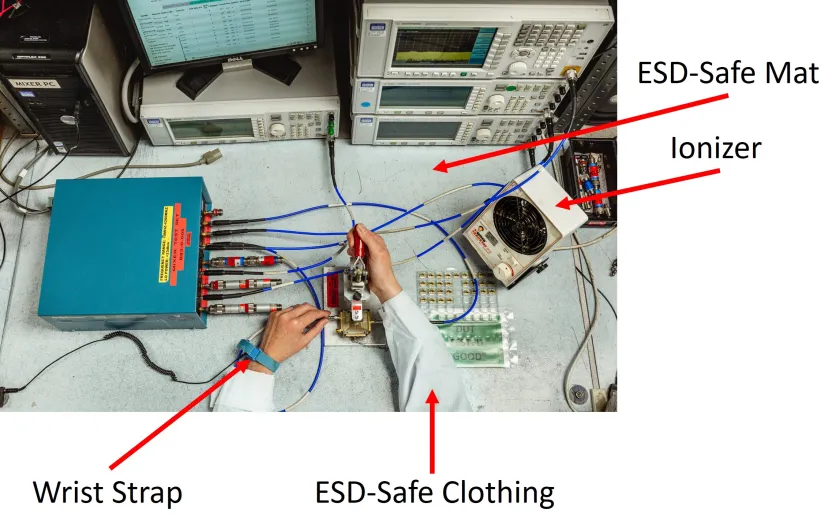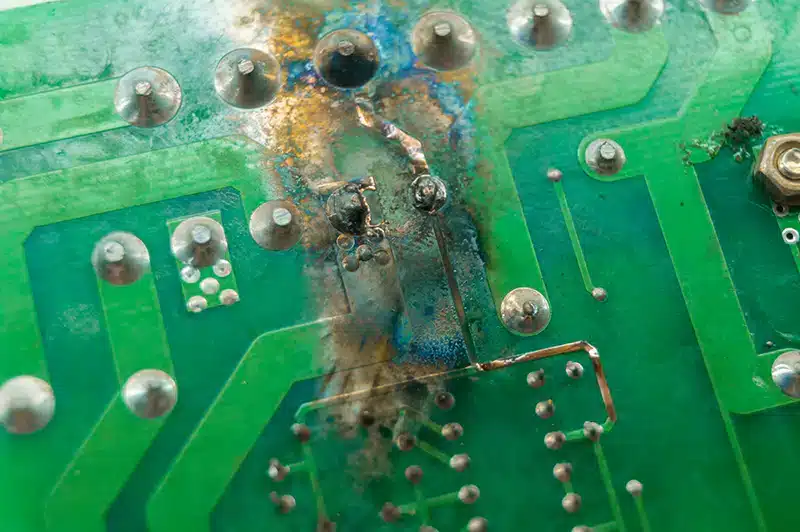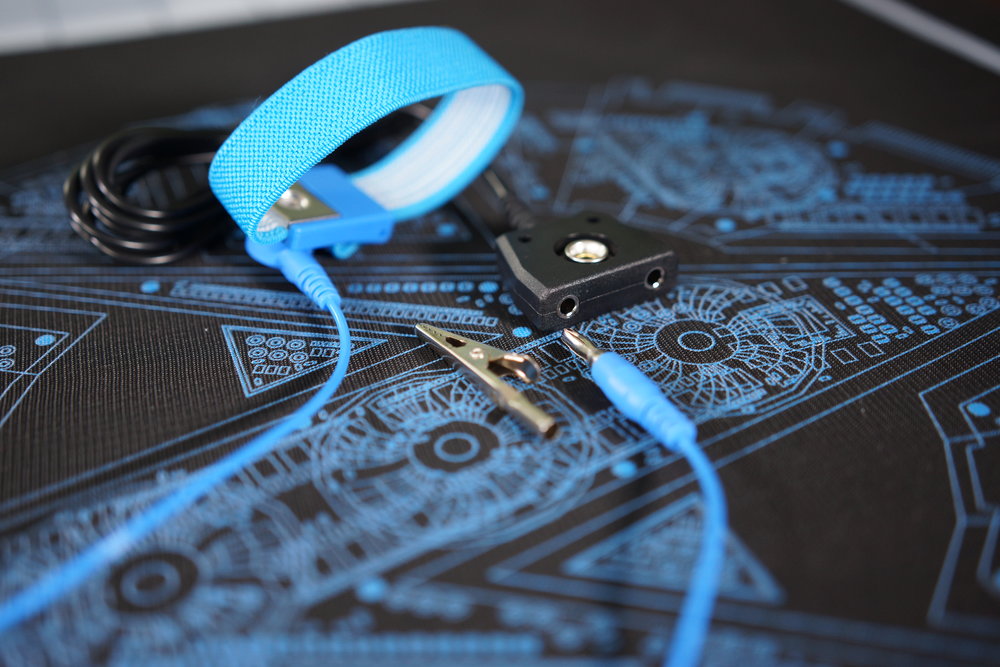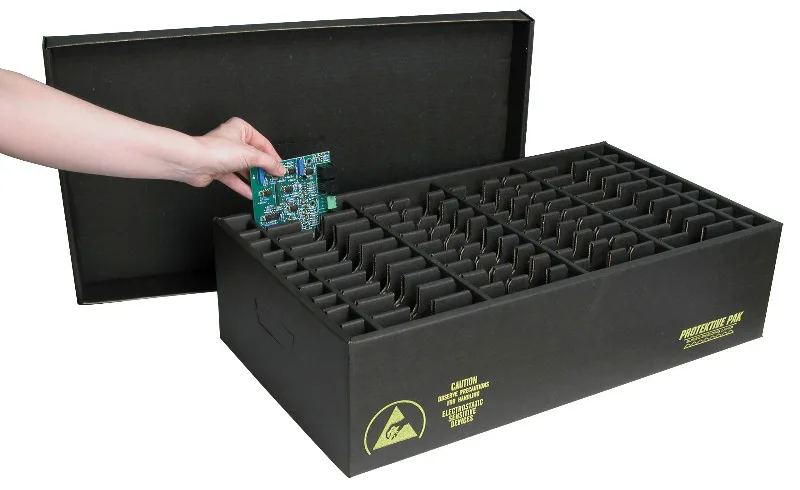Electrostatic discharge (ESD) is a silent threat in electronics manufacturing, capable of causing catastrophic damage to sensitive components or latent defects that reduce product reliability. In PCB assembly workstations, where precision and quality are paramount, effective ESD protection is not just a best practice—it's a necessity. With the electronics industry losing an estimated $5 billion annually due to ESD-related failures, implementing robust ESD control measures is critical to ensuring high yield, reliability, and customer satisfaction. This blog explores the importance of ESD protection, key strategies for implementation, and practical steps to safeguard your PCB assembly process.

Understanding Electrostatic Discharge (ESD) in PCB Assembly
ESD occurs when two objects with different electrical potentials come into contact or close proximity, causing a sudden flow of electricity. In PCB assembly, this can happen when a technician's body, a tool, or even a workbench carries a static charge that discharges into sensitive components like MOSFETs, diodes, or CMOS ICs. Voltages as low as 30V can damage microelectronics, and up to 33% of device failures in the electronics industry are attributed to ESD. These failures may manifest immediately or as latent defects, leading to early breakdowns in the field, which can harm a company's reputation and bottom line.
The sensitivity of modern components, often built with nanoscale features, exacerbates the risk. For example, a Human Body Model (HBM) ESD event, simulating a discharge from a person, can generate voltages of 250V or more, while a Charged Device Model (CDM) pulse as low as 100V can damage an IC. Without proper controls, static charges from everyday actions—like walking across a carpet or handling plastic packaging—can wreak havoc on PCB assemblies.
Why ESD Protection Matters in PCB Assembly Workstations
The consequences of inadequate ESD protection are severe. Catastrophic failures result in immediate component damage, requiring costly rework. Latent defects, which account for 60-90% of ESD-related damage, are even more insidious, as they may pass initial testing but fail during operation, leading to high return merchandise authorization (RMA) rates. According to a Deloitte study, ESD-related costs in the U.S. electronics industry alone reach $5 billion annually, underscoring the need for comprehensive protection.
Effective ESD management improves yield, reduces rework, and enhances product longevity. By controlling static charge in the workstation environment, manufacturers can achieve a 60-70% reduction in ESD-related costs, as reported by Gartner. For engineers, this translates to fewer production headaches and more reliable products, fostering trust with customers and end-users.

Key Components of an ESD-Safe Workstation
Creating an ESD-safe workstation requires a combination of environmental controls, equipment, and personnel practices. Below are the essential components to establish a robust ESD protection system.
1. Grounded Work Surfaces and Mats
All workstation surfaces must be static-dissipative to prevent charge buildup. ESD mats, typically with a surface resistivity of 10^6 to 10^9 ohms, provide a safe path for static charges to dissipate to ground. These mats should cover workbenches and be connected to a common grounding point. Regular cleaning with ESD-safe detergents is crucial to maintain their dissipative properties.
2. Personnel Grounding
Technicians are a primary source of static charge, generating up to 30,000V through simple movements. Grounded wrist straps, with a resistance of 1MΩ to ensure safe discharge, are a cost-effective solution. Heel straps or ESD-safe shoes are also essential, especially in low-humidity environments where static buildup is more likely. Daily testing of wrist and heel straps using impedance testers ensures their effectiveness.

3. Conductive Flooring
ESD-specific floor tiles, often containing carbon or graphite, provide electrical conductivity to prevent static generation. These floors should maintain a resistance of 10^6 to 10^10 ohms and be grounded to the same system as workstations. In dry climates, maintaining humidity between 40-70% further reduces static buildup, as dry air promotes ion accumulation.
4. ESD-Safe Tools and Equipment
All tools, such as tweezers, vacuum pickup tools, and soldering irons, must be ESD-safe to avoid charge transfer. Equipment like pick-and-place machines should be grounded to prevent static generation during operation. Regular testing of equipment grounding, ideally weekly, ensures ongoing compliance.
5. Anti-Static Packaging
PCBs and components must be stored and transported in ESD-safe packaging, such as metallized anti-static bags or conductive totes. These materials, modeled on the Faraday Cage principle, shield contents from external ESD events. Avoid using standard plastics or cardboard, which can generate static charges.

Best Practices for ESD Control in PCB Assembly
Implementing an effective ESD control program involves more than just equipment—it requires a holistic approach encompassing training, procedures, and compliance. Here are key best practices to follow:
1. Establish an ESD-Protected Area (EPA)
Designate specific areas for handling ESD-sensitive components, marked clearly with signage to restrict access to trained personnel. All surfaces, tools, and equipment within the EPA must be grounded to a common point, ensuring equipotential bonding. According to IEC 61340-5-1, an EPA should maintain a controlled environment with proper grounding and static-dissipative materials.
2. Comprehensive Training
ESD training is the cornerstone of an effective program. All personnel, from technicians to managers, should understand ESD risks and proper handling procedures. Training should cover the use of wrist straps, safe handling techniques (e.g., touching PCB edges rather than pins), and the importance of humidity control. Regular refreshers ensure compliance, especially for new hires.
3. Regular Testing and Audits
Daily testing of wrist straps and footwear, combined with weekly checks of workstation grounding, is critical. Use impedance testers to verify that resistance values meet standards (e.g., 1MΩ for wrist straps). Periodic audits, aligned with standards like ANSI/ESD S20.20, ensure ongoing compliance and identify areas for improvement.
4. Minimize Static Generators
Eliminate static-generating materials, such as standard plastics, tape dispensers, or fabric chairs, from the EPA. For example, pulling tape off a roll can generate thousands of volts. Use ESD-safe alternatives, like static-dissipative tape or conductive chairs, to reduce risks.
5. Implement Circuit-Level Protection
In addition to workstation controls, incorporate ESD protection into PCB designs. Use transient voltage suppressors (TVS) or surge protection diodes at input/output ports to divert ESD currents. Ground planes in PCB layouts can bypass ESD to ground, reducing the risk of damage to active components. Ensure suppressors are placed close to potential ESD entry points to minimize parasitic inductance, which can slow protection circuits.
Standards and Compliance for ESD Protection
Adhering to industry standards ensures consistent ESD protection. Key standards include:
- ANSI/ESD S20.20-2021: Provides guidelines for establishing an ESD control program, covering grounding, materials, and personnel training.
- IEC 61340-5-1: Focuses on creating EPAs with detailed requirements for workstations, flooring, and handling procedures.
- JEDEC JESD625B: Targets semiconductor manufacturing, emphasizing component-level protection.
- MIL-STD-1686: A stringent standard for defense applications, relevant for high-reliability environments.
Integrating ESD controls into an ISO 9001 quality management system can further enhance compliance, ensuring consistent quality across production processes.
The Role of ALLPCB in ESD-Safe PCB Assembly
At ALLPCB, we understand the critical importance of ESD protection in delivering high-quality PCB assemblies. Our state-of-the-art facilities are equipped with ESD-safe workstations, conductive flooring, and rigorously trained personnel to ensure your boards are protected at every stage. With our quick-turn prototyping and advanced manufacturing capabilities, we help engineers bring reliable, high-performance products to market faster. Our global logistics ensure safe transportation in ESD-compliant packaging, minimizing risks from production to delivery.
Conclusion
ESD protection in PCB assembly workstations is a non-negotiable aspect of modern electronics manufacturing. By implementing grounded workstations, personnel training, ESD-safe tools, and circuit-level protections, manufacturers can significantly reduce the risk of costly failures and improve product reliability. Adhering to industry standards like ANSI/ESD S20.20 and IEC 61340-5-1 ensures a robust ESD control program, while practical measures like wrist straps and anti-static packaging provide immediate benefits. For engineers, prioritizing ESD protection means delivering products that meet the highest standards of quality and durability, fostering trust and success in the competitive electronics market.
 ALLPCB
ALLPCB







